During the Panasonic Z95A tests, we felt like we were holding a television that deserves to be called one of the best on the market. When it comes to picture quality, it is absolutely fantastic! OLED with infinite contrast, perfect blacks, and incredible brightness makes watching movies a pure pleasure. The micro-lens technology (MLA) has really made a difference. Thanks to it, the picture has gained not only brightness, achieving a spectacular 1500 nits in HDR content, but viewing angles have also improved – which are already quite good in regular WOLED panels. As a result, every scene looked so realistic that we felt as if we were part of it. We also checked how it performed in various lighting conditions – it dazzled without exception in both dark and bright rooms. We also couldn't complain about the sound. The built-in soundbar with Dolby Atmos surprised us with its spaciousness and dynamics, which is usually lacking in speakers integrated with the television. It's really solid support for cinematic experiences. The Panasonic Z95A also does not disappoint gamers. We tried out its gaming features – support for ALLM, VRR, a 144 Hz panel, and playing in Dolby Vision at 120 Hz is something every avid gamer will appreciate. Additionally, there are practical extras, such as the ability to record onto an external drive and a PiP function, which make everyday use of the television more enjoyable. Of course, we also noticed some downsides. Amazon's Fire TV operating system, while better than in older models, still has its flaws. The lack of some popular apps, such as Player.pl or TVP VOD, and poorly executed translations in the interface can sometimes be irritating, especially in a television of this price range. The Panasonic Z95A is a television with a capital "P" for premium. It impresses with its picture quality, sound, and functionality. However, its high price may deter some, especially when there are devices on the market offering similar capabilities at a much lower price. If, however, the budget is not an issue, the Z95A is a television that delivers cinematic experiences at absolutely the highest level.
- Matching (Score)
- Our verdict
- TV appearance
- Where to buy
- Contrast and black detail
- HDR effect quality
- Factory color reproduction
- Color reproduction after calibration
- Smoothness of tonal transitions
- Image scaling and smoothness of tonal transitions
- Blur and motion smoothness
- Console compatibility and gaming features
- Input lag
- Compatibility with PC
- Viewing angles
- TV efficiency during daytime
- Details about the matrix
- TV features
- Apps
- Playing files from USB
- Sound
Panasonic Z95A vs Samsung QN900F
Direct compare
Z95A
NeoQLED 8K / QN900F

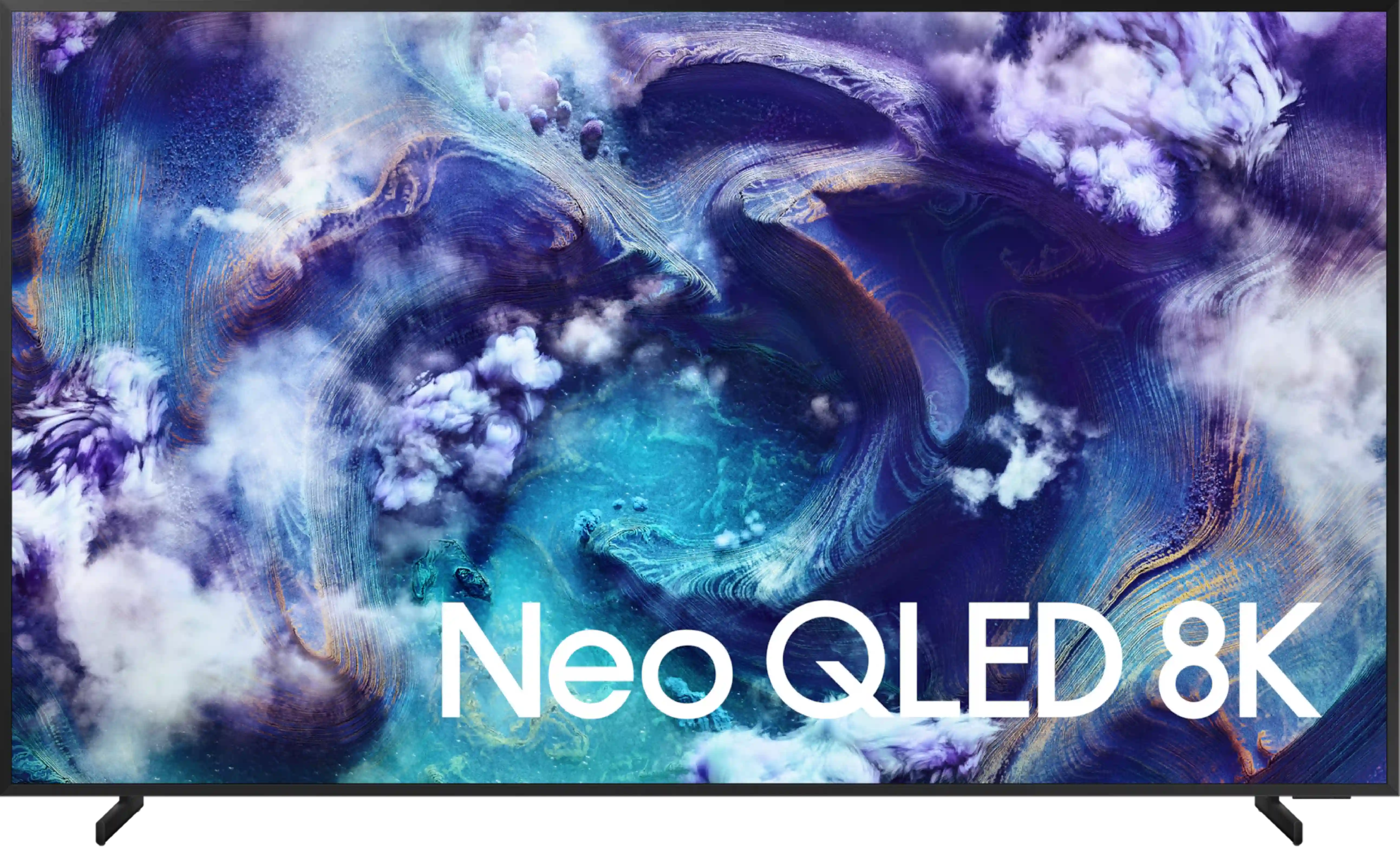
Panel type: WRGB OLED
Resolution: 3840x2160
System: Amazon FireTV
Model year: 2024
Complete the survey to find out the result

Panel type: LCD VA
Resolution: 3840x2160
System: Tizen
Model year: 2025
Complete the survey to find out the result

Overall rating
8.3
7.7
Movies and series in UHD quality
8.7
7.3
Classic TV, YouTube
9.0
7.3
Sports broadcasts (TV and apps)
8.9
7.4
Gaming on console
9.6
8.8
TV as a computer monitor
8.6
8.4
Watching in bright light
6.2
7.1
Utility functions
7.4
7.2
Apps
6.1
8.7
Sound quality
8.7
8.2
Complete the survey to find out what fits your preferences
Advantages
Great picture quality: Thanks to OLED technology with MLA, the image offers deep blacks and infinite contrast
Impressive HDR: Brightness of 1760 nits, support for Dolby Vision and HDR10+
Colour reproduction after calibration is truly reference quality
Excellent viewing angles
144 Hz and gaming features: Support for ALLM, VRR
Low input lag
Built-in soundbar with Dolby Atmos: Delivers spatial and dynamic sound
Support for user functions: USB recording, AirPlay, PiP and Miracast
Good blacks
Very high brightness - up to 2000 nits in HDR
Excellent motion fluidity - 4k@165hz with low motion blur
Many features for gamers: VRR, ALLM, Game-bar, low input lag
Decent viewing angles
High usability efficiency in difficult lighting conditions: Matte screen + high brightness
Pleasant and very fast operating system: Tizen
Pleasant sound from built-in speakers
Disadvantages
Local dimming algorithms could have been better refined
Missing support for recording from built-in tuners
Missing DTS:X (home theatre)
Missing HGiG*
*This is likely an update error and we are monitoring the situation closely.
Our verdict
The Samsung QN900F is a television that can make a huge impression. The greatest strength of this model is the combination of Mini-LED backlighting with a matte panel. This not only provides decent blacks but above all incredible brightness and excellent visibility in any conditions. During the day, in a brightly lit room, it is probably the best-performing television in Samsung's offering this year. Gamers will also find plenty to like here – even though it's an 8K screen, it can run at 165 Hz in 4K. In addition, it comes with a full suite of HDMI 2.1, VRR and ALLM features, and low input lag, so the QN900F is well-suited for both next-gen consoles and PCs. The design also deserves big praise – when mounted on the wall, with its thick metal frame, this model resembles a more luxurious version of the iconic The Frame. Combined with the matte panel and Art Store mode, it can actually be treated as a piece of equipment that not only plays and shines but also decorates the living room.
However, not everything is perfect. Despite its impressive specs, managing local dimming doesn't always perform as well as one might expect. Given the large number of zones, Samsung could improve its control over blacks and HDR effects – it’s clear that the potential is enormous, but this doesn't always translate to top-tier picture quality. Additionally, it’s worth noting that 8K resolution is still more of a novelty than a real necessity, and the price of this model makes it easy to start looking for cheaper alternatives, even within Samsung's own offerings. Despite these reservations, the QN900F is a television that can definitely impress. Its strength lies not in the 8K itself, but in how it presents the picture, how it looks, and the enjoyment it provides when using it.
TV appearance




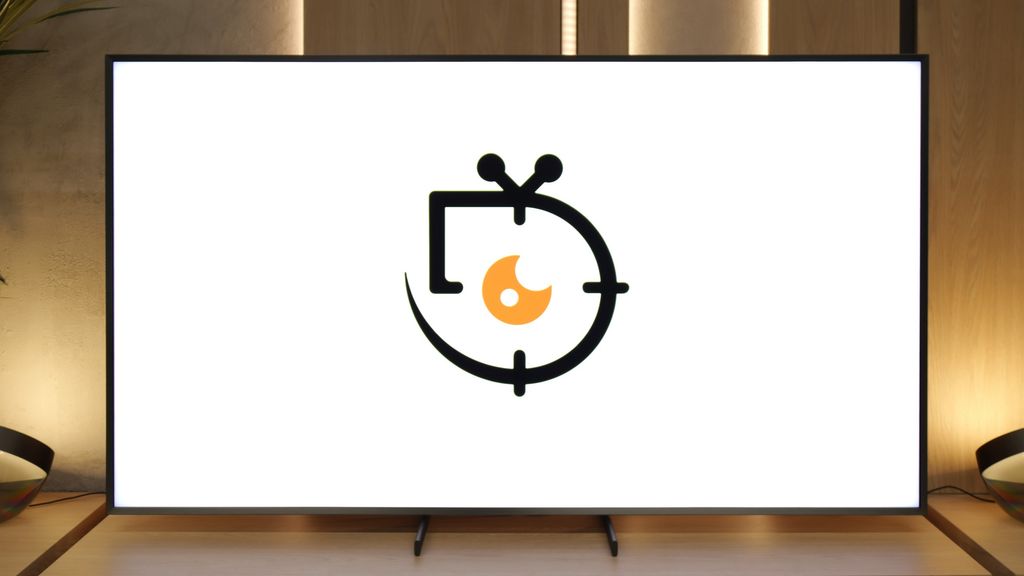
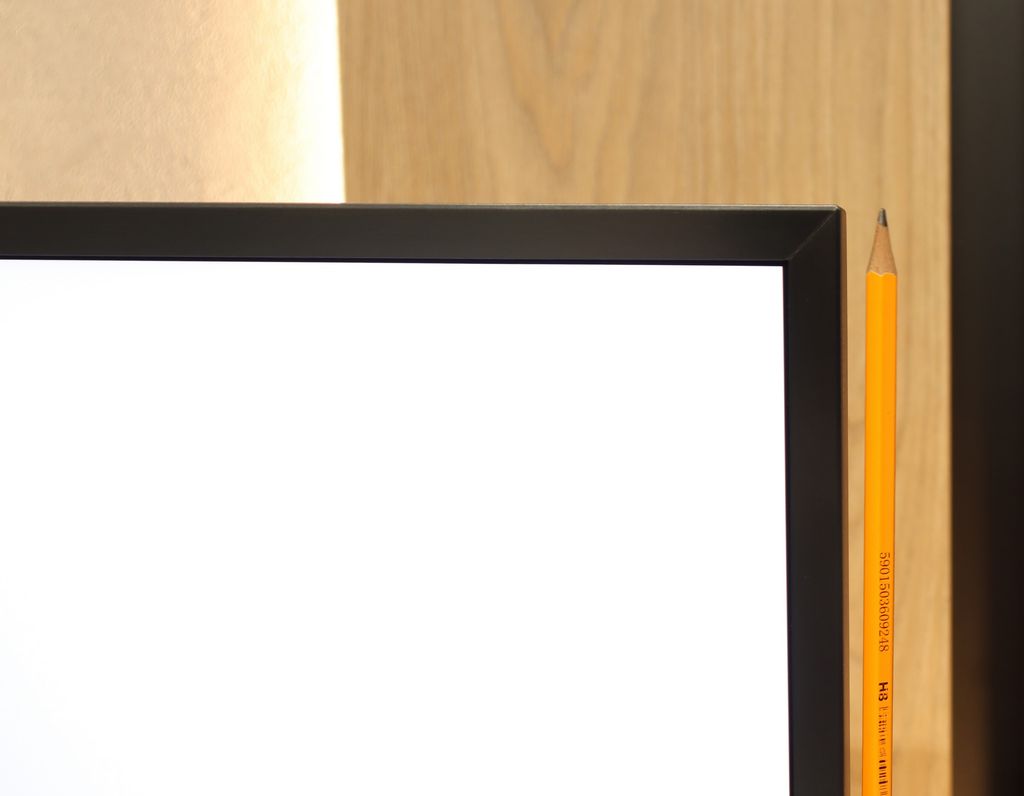
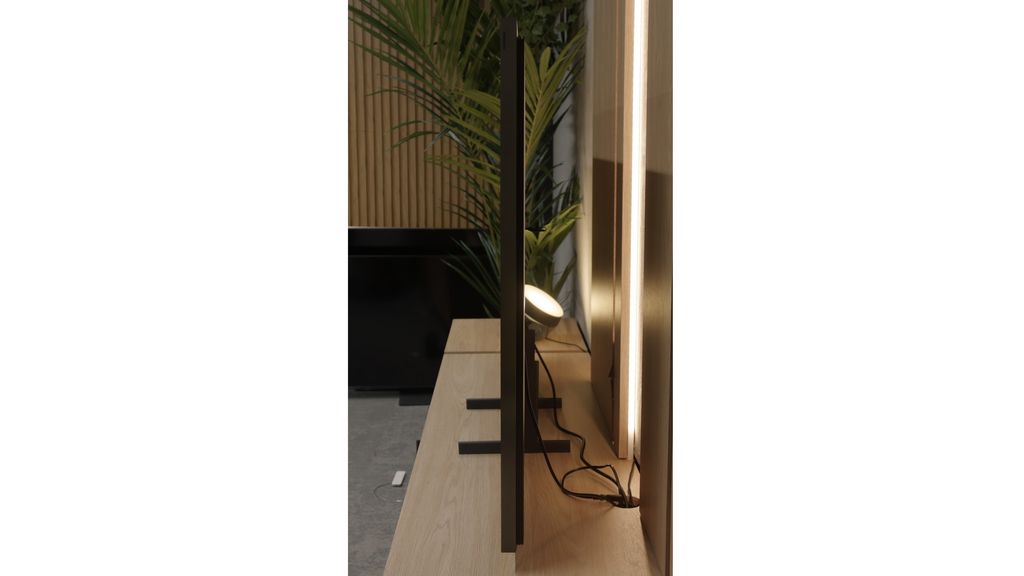
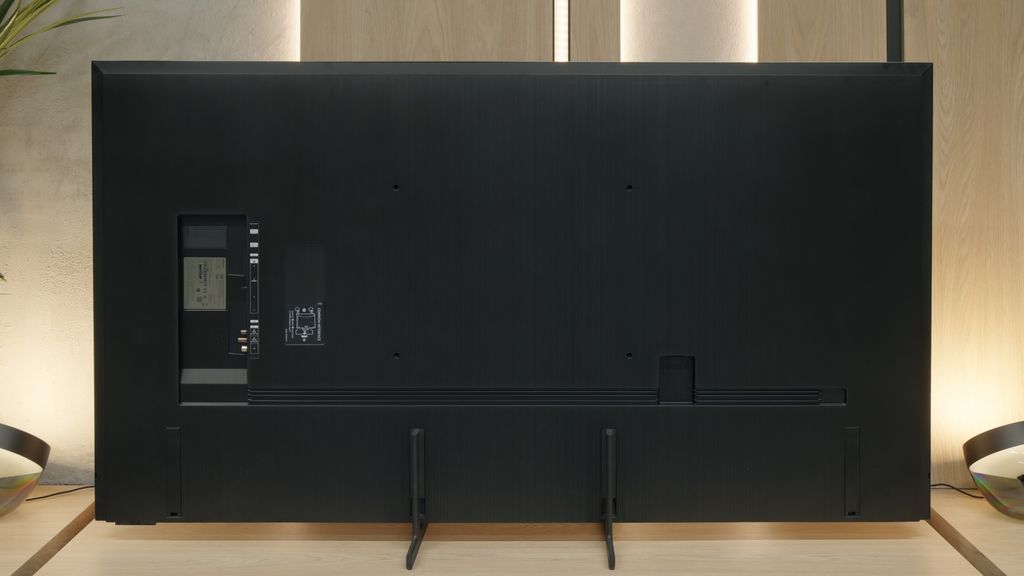
Contrast and black detail
10/10
7.2/10
Local dimming function: Yes, number of zones: 1056 (24 x 44)
Contrast:

Result
∞:1

Result
∞:1

Result
∞:1

Result
∞:1

Result
∞:1

Result
126,000:1

Result
41,650:1

Result
49,800:1

Result
5,350:1

Result
2,250:1
Halo effect and black detail visibility:

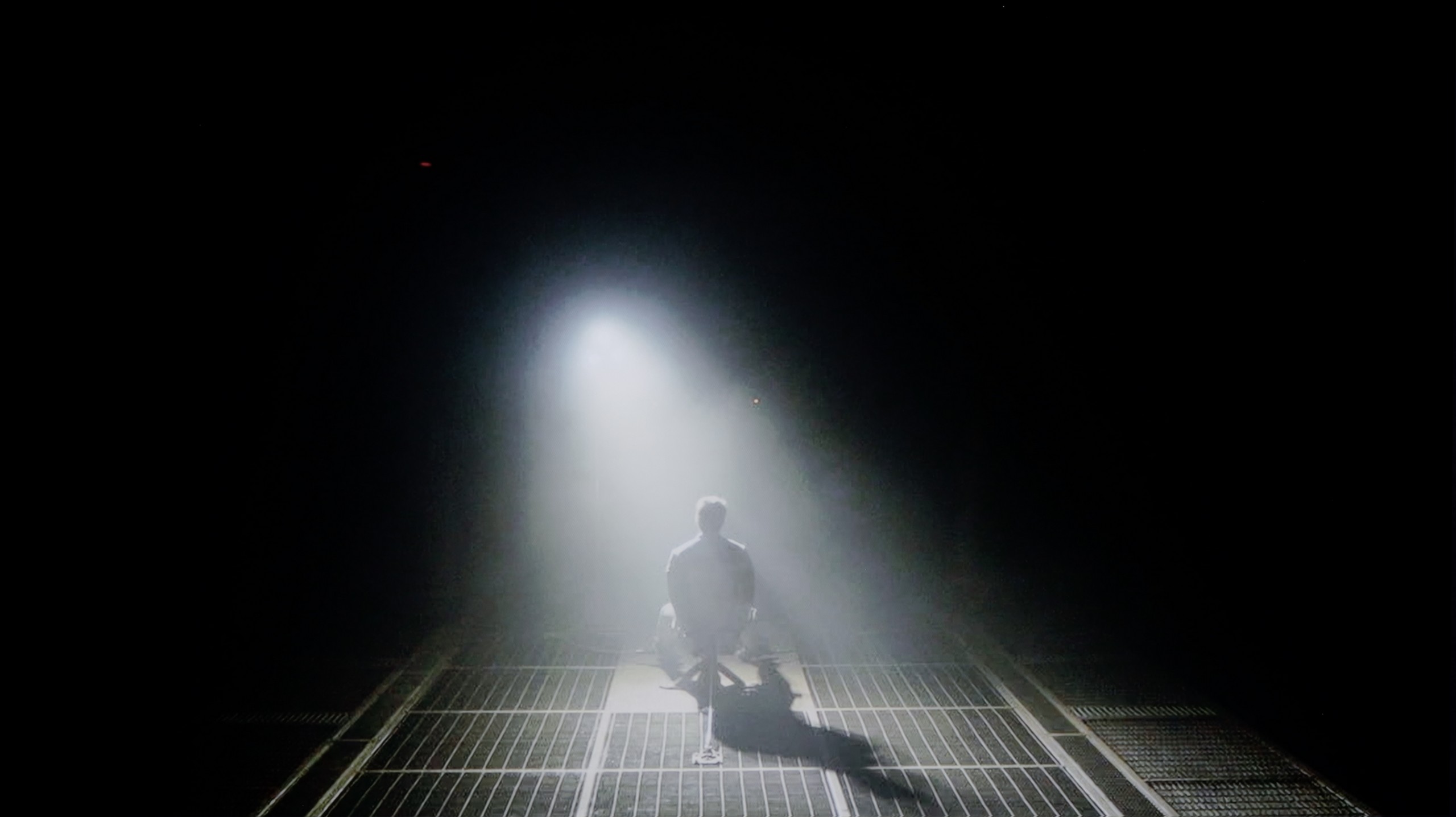
The contrast and black levels in the television Panasonic Z95A are at a level that captures the attention of even the most discerning viewers. The Z95A, as befits an OLED, delivers outstanding performance in this area. In every test scene, the contrast is practically infinite, resulting in excellent image quality under real-world conditions. During the screening of the film Oblivion, you can see how light sources, such as lamps, fall on the actor, creating an incredibly realistic effect. The Z95A Panasonic reproduces these details in black with impressive precision, ensuring that even subtle differences in brightness and lighting are clear. This gives viewers a sense of depth and naturalness in the picture, which is hard to find in LED televisions that often offer various compromises.
The QN900F is equipped with a VA panel, which in itself provides decent contrast, but that’s not where its greatest strength lies. This is a mini-LED TV, so we have local dimming technology here, allowing selected areas of the image to be dimmed. In the 65-inch variant, we counted as many as 1,056 zones, which resulted in really solid performance. In the best possible scenario, the QN900F achieved a contrast exceeding 100,000:1, which is an absolutely impressive result – at such a moment, the blacks could really resemble those of an OLED. However, it's important to remember that it is not an OLED and has its classic mini-LED quirks. Because the TV must decide which zone to brighten and which to dim, there are moments when the algorithm doesn’t quite know what to do. This was the case, for example, in one of our test scenes, where the QN900F prioritised brightness over the depth of black, resulting in a significant drop in contrast to a level of 2,300:1. Yes, elements on the screen were brighter, but around them was a characteristic glow (halo effect) – the black then resembled more of a navy blue. Generally, the black in the QN900F is really very good – but not quite enough to compare it with TVs that have organic panels.
HDR effect quality
8.3/10
6.4/10
Luminance measurements in HDR:

Result
1667 nit

Result
1738 nit

Result
1792 nit

Result
1798 nit

Result
999 nit

Result
1200 nit

Result
609 nit

Result
850 nit

Result
214 nit

Result
1415 nit
Scene from the movie “Pan” (about 2800 nits)


Scene from the movie “Billy Lynn” (about 1100 nits)


Static HDR10


Dynamic: Dolby Vision
Dynamic: HDR10+


HDR luminance chart:
Samsung QN900F
Luminancja HDR
Luminance of RGB colors
Panasonic Z95A
Luminancja HDR
Luminance of RGB colors
Panasonic Z95A shows class when it comes to HDR performance. In luminance tests, it achieves a level of 1800 nits, which has a real impact on movie watching. Scenes from Life of Pi or Gemini Man look fantastic – the television effortlessly reproduces details and the intensity of bright spots, making a strong impression with its power. In more demanding moments, like the final scene from The Meg, you can see how bright light floods the screen. In such moments, brightness drops, which is typical for organic panels. Nevertheless, a result around 1000 nits can still be considered excellent, still providing very good picture quality. Additionally, the television offers great coverage of wide colour gamuts – up to 98.6% for DCI-P3 and 74.5% for BT.2020. This means that colours are not only vibrant but also deeply saturated, allowing full appreciation of the richness of details, especially in HDR scenes. Such coverage makes colours look more realistic, and the HDR effect gains intensity and accuracy. All this impressive HDR effect is thanks to MLA technology, which enables such high luminance and excellent image detail. With it, the Panasonic Z95A offers HDR at a level that truly makes a difference.
QN900F is a seriously bright TV – it can generate nearly 2000 nits, which is a level that remains unattainable for most models on the market. But the ability to achieve such brightness isn’t everything – it also matters whether the TV can make good use of it. And here it’s not always perfect. Our tests on cinematic scenes showed that in scenes like those from Life of Pi or The Meg, the QN900F can really shine – both literally and figuratively. In such moments, its greatest advantage, which is brightness, makes a huge impression. However, in more demanding scenes, things start to get tricky – similar to assessing contrast. When smaller, bright elements appear on the screen, the TV often struggles with the decision of whether to highlight them at the cost of black levels or perhaps maintain deep blacks but tone down the brightness. The result is situations where, for example, in the movie Sicario 2, the brightness dropped to just 200 nits, making details barely visible. The dimming algorithms could definitely be better, considering the class of this television.
Factory color reproduction
8.3/10
5/10


Factory Mode
After calibration


Factory Mode
After calibration
The best picture mode on the Panasonic Z95A is undoubtedly the Filmmaker mode. This mode offers quite good image reproduction, but it is not without certain flaws that need addressing. Primarily, the white balance, for both 4K and HD content, tends to be dominated by red and blue hues. This leads to a slight pink tint in the image, particularly noticeable in bright, white scenes. Such discrepancies can be seen in the comparative image below, which illustrates the issue well. The Colour Checker test also confirms these inaccuracies, showing slight shifts of dots towards the mentioned shades.
In terms of gamma brightness characteristics, it performs very well, with only minor issues when brightening small details. A greater challenge arises with the EOTF curve, which is responsible for controlling brightness in 4K HDR content. Here, there is a slight boost in brightness above the reference value, which sometimes makes the image overly bright, especially in more demanding scenes. While the Filmmaker mode is definitely the best choice on the Z95A, these aspects require refinement to fully harness the television's potential.
Testing the QN900F in Filmmaker mode, the distinct characteristics of the image quickly became apparent, despite this mode being designed to reflect the director's vision. The white balance was not perfect – the television had noticeable deficits in blue. This caused the entire scene to take on a warmer tone, as if someone had applied a subtle filter in shades of yellow and orange to the image. In films where bright shots dominate – for example, scenes in the snow or under strong daylight – this gave an impression of a slight warmth that does not always convey the director's intention. The second noticeable element was the management of brightness. The QN900F sometimes brightened the image more than necessary. It looked as if the exposure had been slightly "pushed up," which caused the scene to lose some naturalness. Shadows could be too shallow, and contrast slightly weakened. These are not disqualifying errors, but for a television in this price range, it is clear that the Filmmaker mode has not been perfected one hundred percent. This is particularly noticeable when we compare its image to what was visible after the screen calibration.
Color reproduction after calibration
9.4/10
8.7/10




After calibration, Panasonic Z95A showcases its full potential, delivering an almost perfect image. The television offers extensive adjustment capabilities, which we have fully utilised. The white balance post-calibration is absolutely flawless, and the errors in SDR content at 0.5 are at an exceptionally reference standard. The same goes for 4K HDR content – the screen tint has been completely eliminated, and the white balance is now exemplary.
The colour palette and Colour Checker test confirm the excellence of the calibration. Errors below 2 are a result that will satisfy both professional calibrators and cinema-quality image enthusiasts. Significant changes have also occurred in the brightness characteristics – the EOTF curve has been aligned, eliminating previous issues with excessive brightness. Additionally, a small error in gamma has been reduced.
Before calibration, the image was acceptable, but now it's in a completely different league. It's a true feast for the eyes, and the quality is hard to compare to anything else. Once fine-tuned, the Panasonic Z95A becomes a true master of colour reproduction.
After calibration, we managed to reduce the errors in white balance and adjust them to a level that can be considered acceptable. It's not perfect, but definitely better than the factory settings. Most colour errors now fall within the deltaE 2–3 range, so in practice, they shouldn't be noticeable during everyday viewing. The biggest improvement is evident in how the television handles brightness in SDR content. Shadows and details are no longer flattened, giving the image depth and naturalness. As for 4K HDR materials – colours themselves are no longer an issue, but one can still notice some imperfections in Mini-LED technology. The QN900F tends to excessively dim the smallest bright elements, causing them to sometimes disappear from view. However, it's worth noting that this is a much better solution than boosting the entire screen, which would ruin the contrast. This is more of a characteristic of the technology rather than a typical flaw, but it's worth keeping in mind. The effects of the calibration are really very good.
Smoothness of tonal transitions
6.5/10
8.3/10





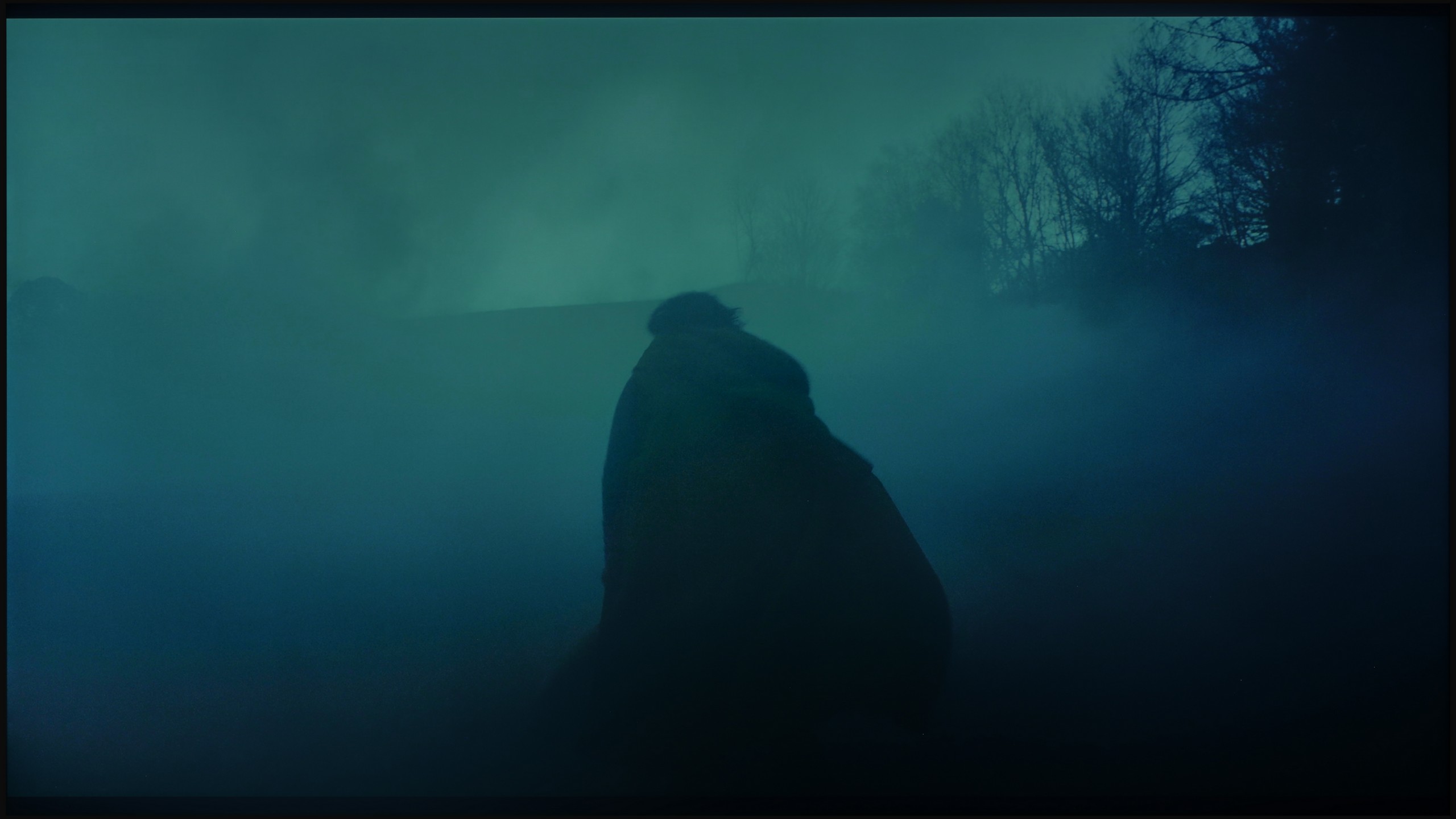

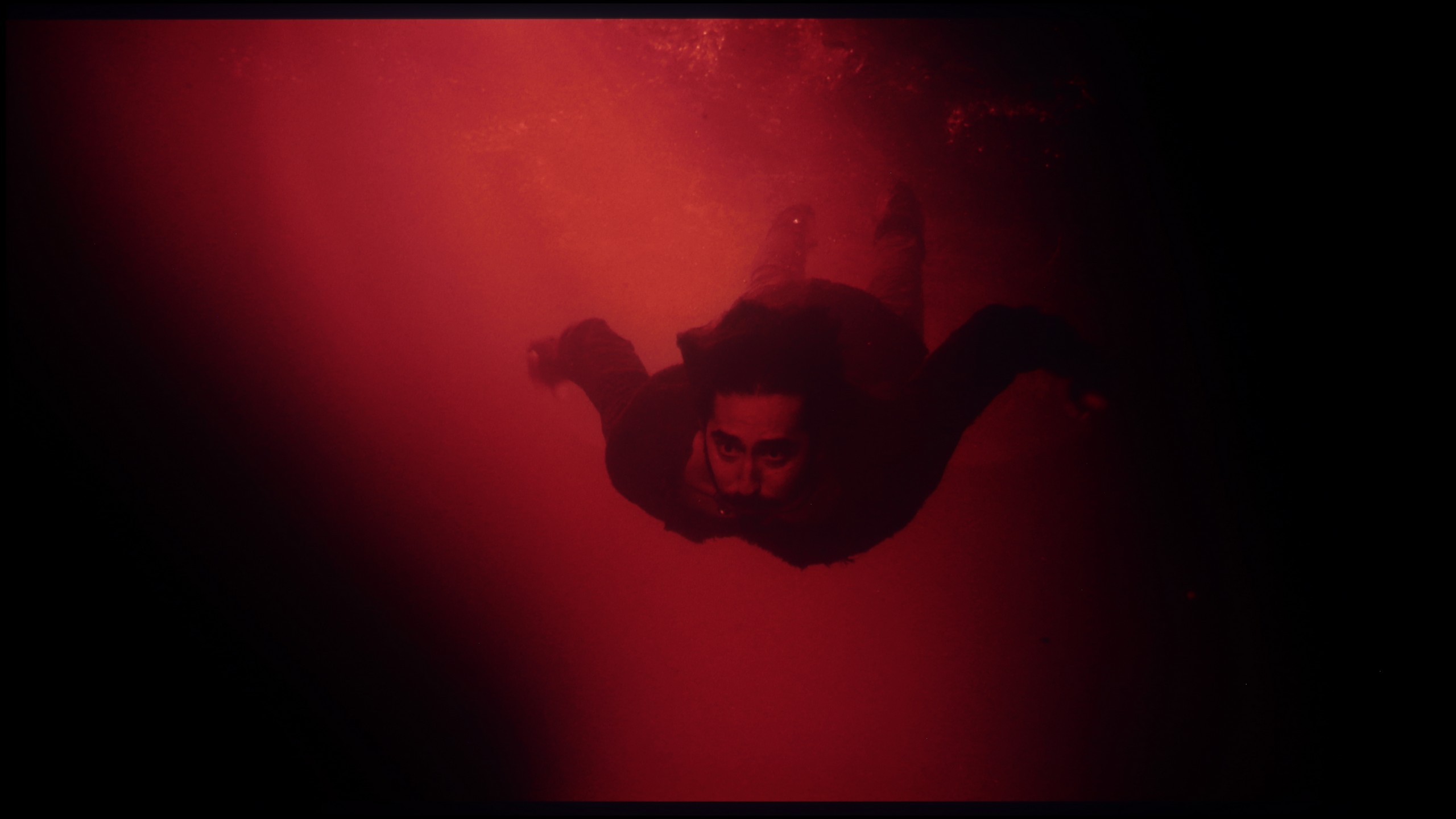




The tonal transitions in Panasonic Z95A are not terrible, but in this class of devices, you can expect more. The television struggles with smoothly blending colours, both in dark and light shades. In more demanding scenes, minor imperfections are noticeable, which can affect the visual experience, especially for more discerning users. While this is not a disqualifying factor, it is an aspect that requires improvement, especially considering the price and aspirations of this model.
The QN900F performs really well in terms of gradation. The tonal transitions are smooth and natural, without clear contours or banding. Interestingly, it is one of the few televisions that handles dark transitions better than bright ones – we only noticed subtle imperfections in strongly illuminated scenes like that from the Kingsman film. In most cases, the image simply looks very good and we have nothing to complain about.
Image scaling and smoothness of tonal transitions
7.4/10
7.5/10
Smooth transition function

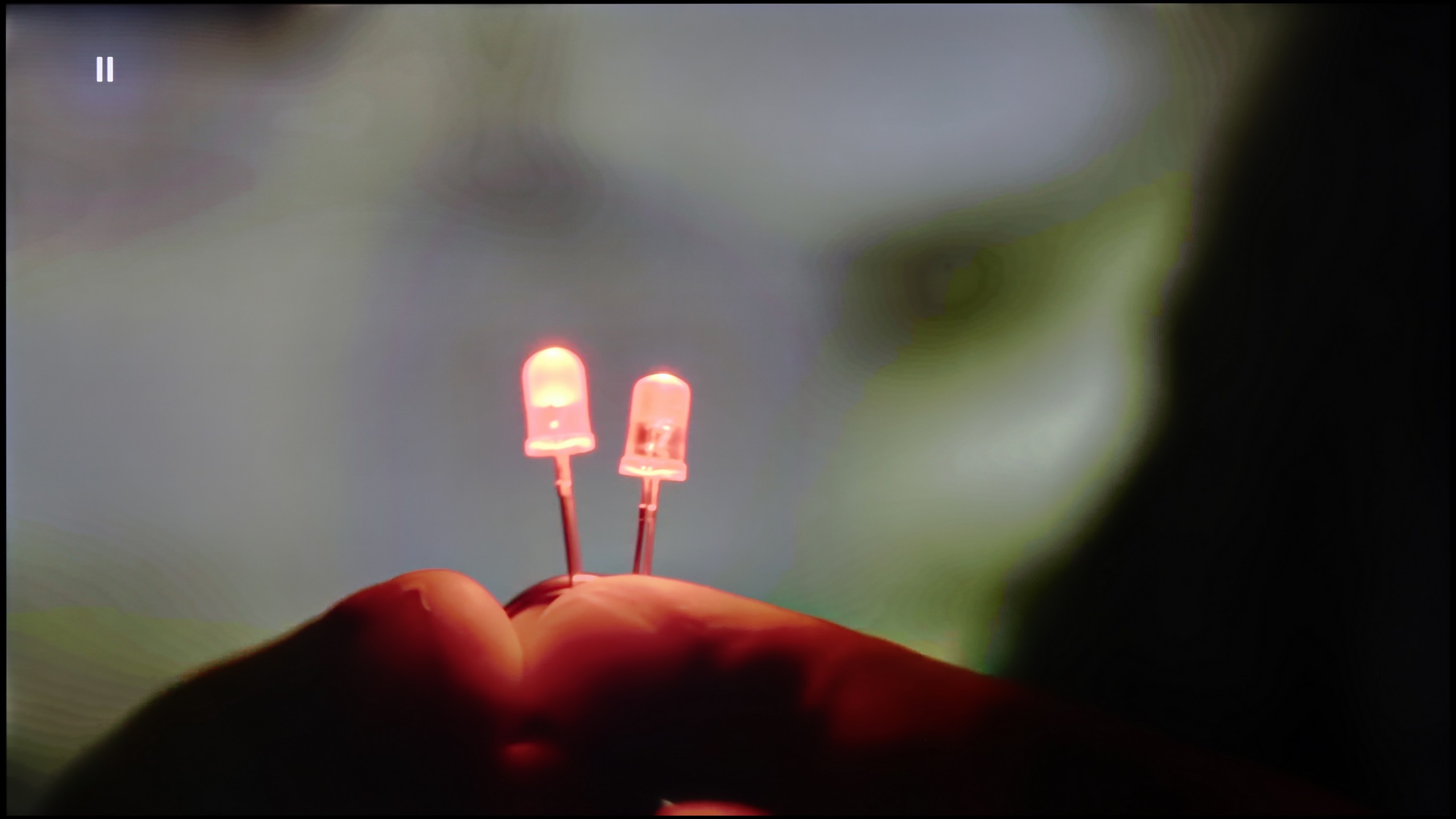
Image without overscan on the SD signal


In the case of lower quality materials, the "Gradation Smoothing" function is responsible for smoothing tonal transitions. The best results are achieved with an intermediate setting – while they are not spectacular, the function works correctly and does not introduce unwanted effects into the image. It can be evaluated as average, but sufficient for improving the quality of tonal transitions.
As for digital processing, or upscaling, the picture looks surprisingly good. It is flexible and pleasant to the eye, which makes lower quality content, such as standard television or YouTube, look quite decent. However, minor issues can be observed, such as "aliasing" on edges, e.g. branches in the background. Nevertheless, this does not significantly affect the overall viewing experience, and the television handles these materials in an acceptable manner.
If we want to get rid of awkward tonal transitions that can be annoying, for example, while watching YouTube, we can use a feature called noise reduction. It works really effectively – it eliminates issues with colour blending when set to Standard level. However, as with most Samsung TVs, this comes with some compromises. Although we didn't notice this feature having a significant impact on the structure of objects in the image, it unfortunately reacts quite aggressively to film grain. Most people will likely appreciate this effect – the noise is simply removed – but if someone is looking for an image as close as possible to reference settings, we definitely recommend turning this option off.
When it comes to upscaling, or dealing with very low-quality content, the QN900F performs really well. On the test pattern with a model, the image looked clear, with only slight jaggedness that shouldn't bother most viewers. However, it’s worth mentioning one issue – the TV sometimes struggles with so-called overscan, which means older content may be slightly cut off. This can manifest, for example, with disappearing subtitles at the bottom of the screen.
Blur and motion smoothness
8.5/10
7.8/10

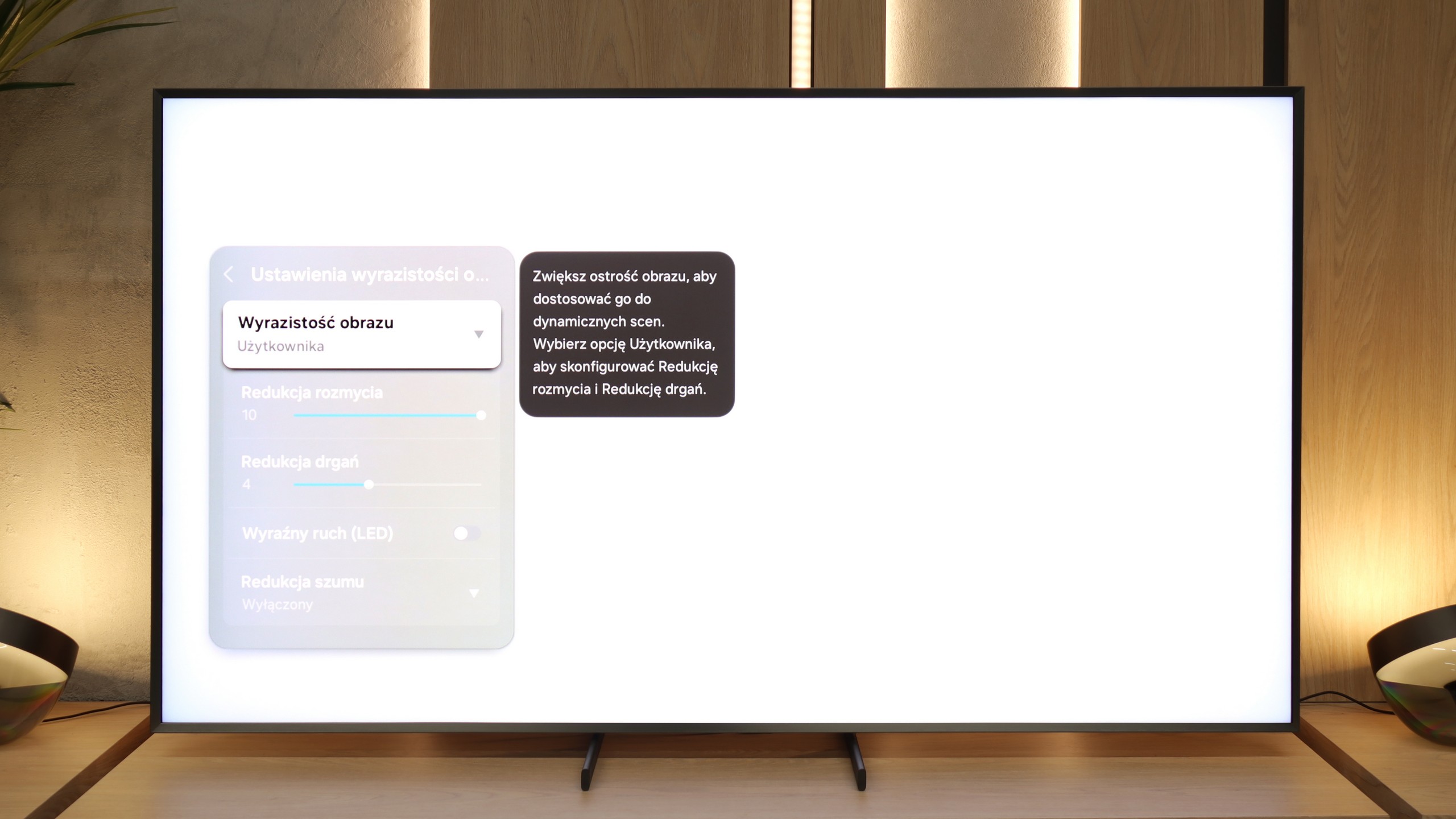
Blur (native resolution, maximum refresh rate):




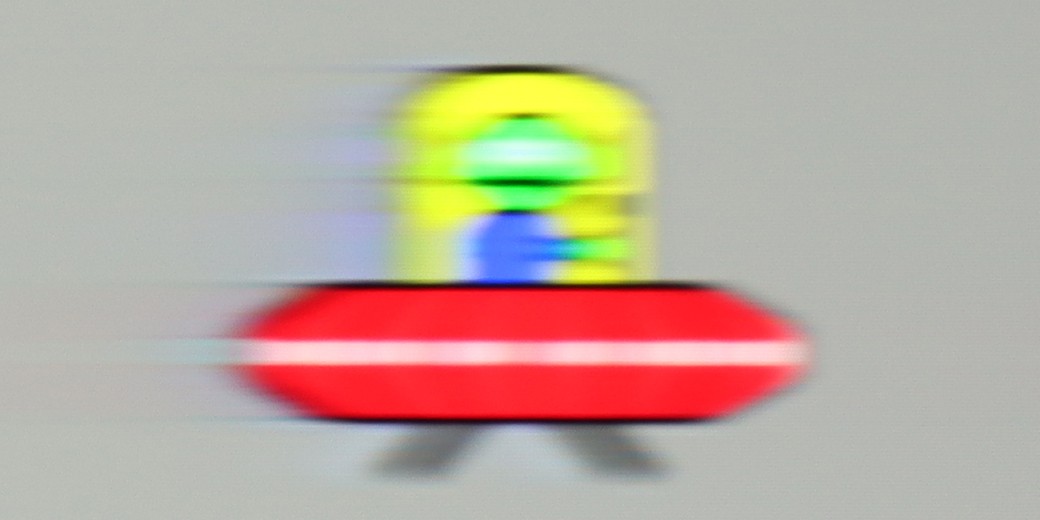
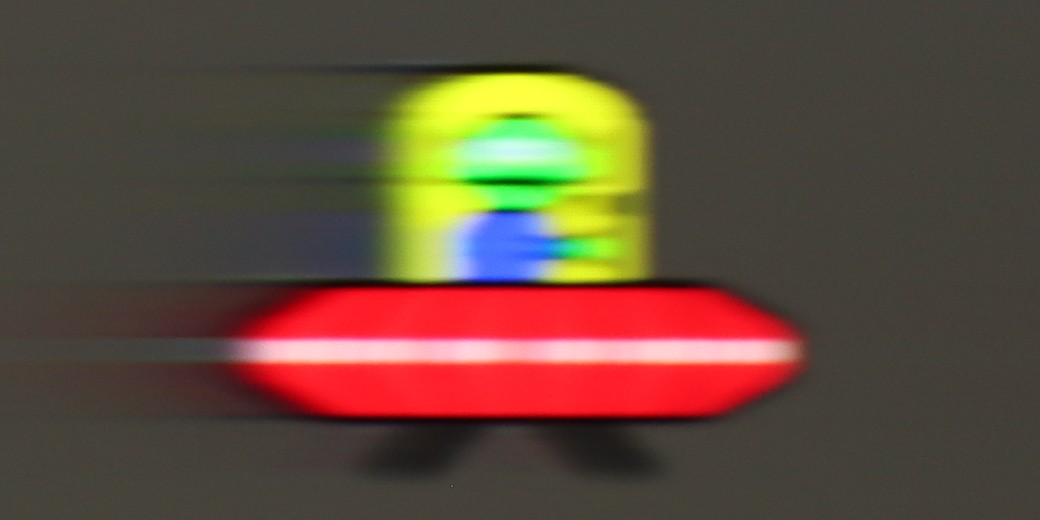
Blur (BFI function enabled):
Image flickers in this mode



Image flickers in this mode



Smużenie ():
Smużenie (4K@165Hz):

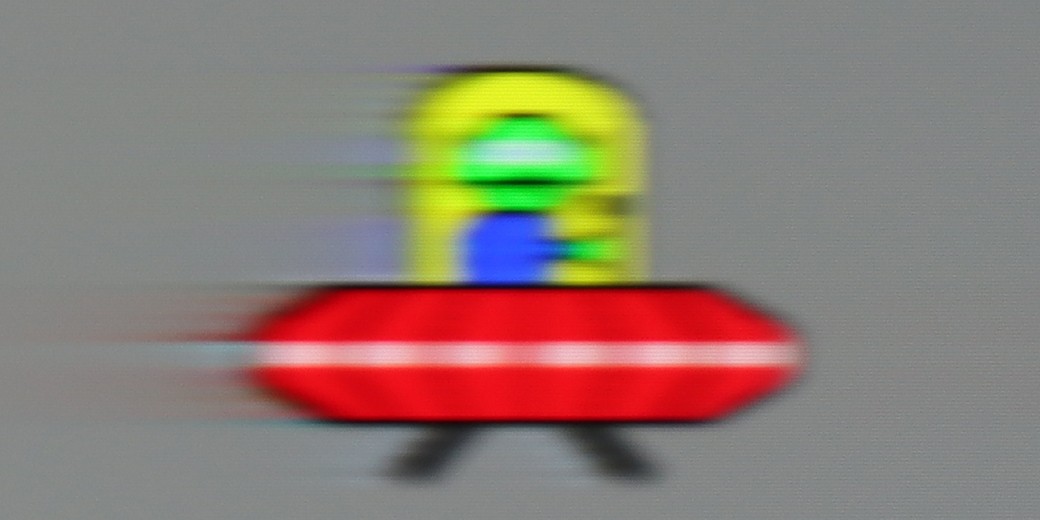

Panasonic Z95A, with a 144 Hz panel, offers excellent image smoothness. For movies, there is an "Intelligent Frame Creation" feature that allows for improved smoothness and reduction of blurring. Users have two sliders at their disposal: "Motion Blur Reduction" – responsible for clearer and sharper details in fast-moving scenes. "Film Smoothness" – adds smoothness by creating additional frames between the originals, making motion appear more fluid and natural with the effect of "soap opera"
As a result, viewers can adjust the settings to their own preferences. Movies and less dynamic content look smooth and natural, which should satisfy most users.
There’s really nothing to nitpick here – the QN900F looks great when it comes to motion. Thanks to its 165 Hz panel in 4K, you can confidently say that this TV is suited for both watching sports and gaming. The motion smoother plays a key role here. It works brilliantly – not just with sports broadcasts, where it can eliminate blurring and image judder, but also in games, where animation becomes clearer and more fluid. And of course, if someone likes to experiment with movies – they have that option as well. At lower settings, you can see a slight graininess and a filmic quality, while higher settings introduce a soap opera effect. So everyone can tailor the picture to their preferences, and the TV has the power to handle it.
Console compatibility and gaming features
10/10
8.2/10
- ALLM
- VRR
- VRR range40 - 144Hz48 - 165Hz
- Dolby Vision Game Mode
- Correct implementation of HGIG
- 1080p@120Hz
- 1440p@120Hz
- 4K@120Hz
- Game bar

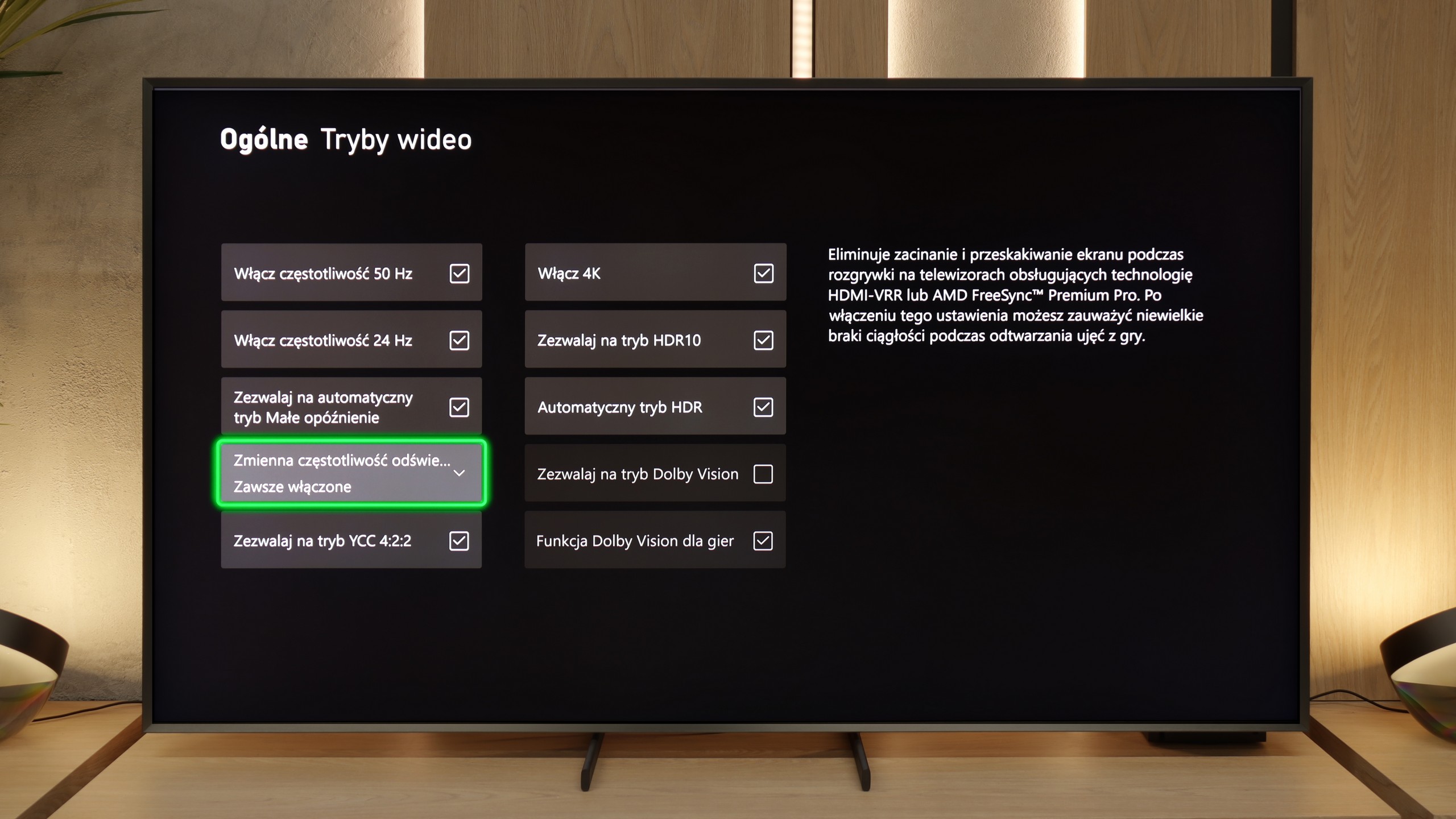

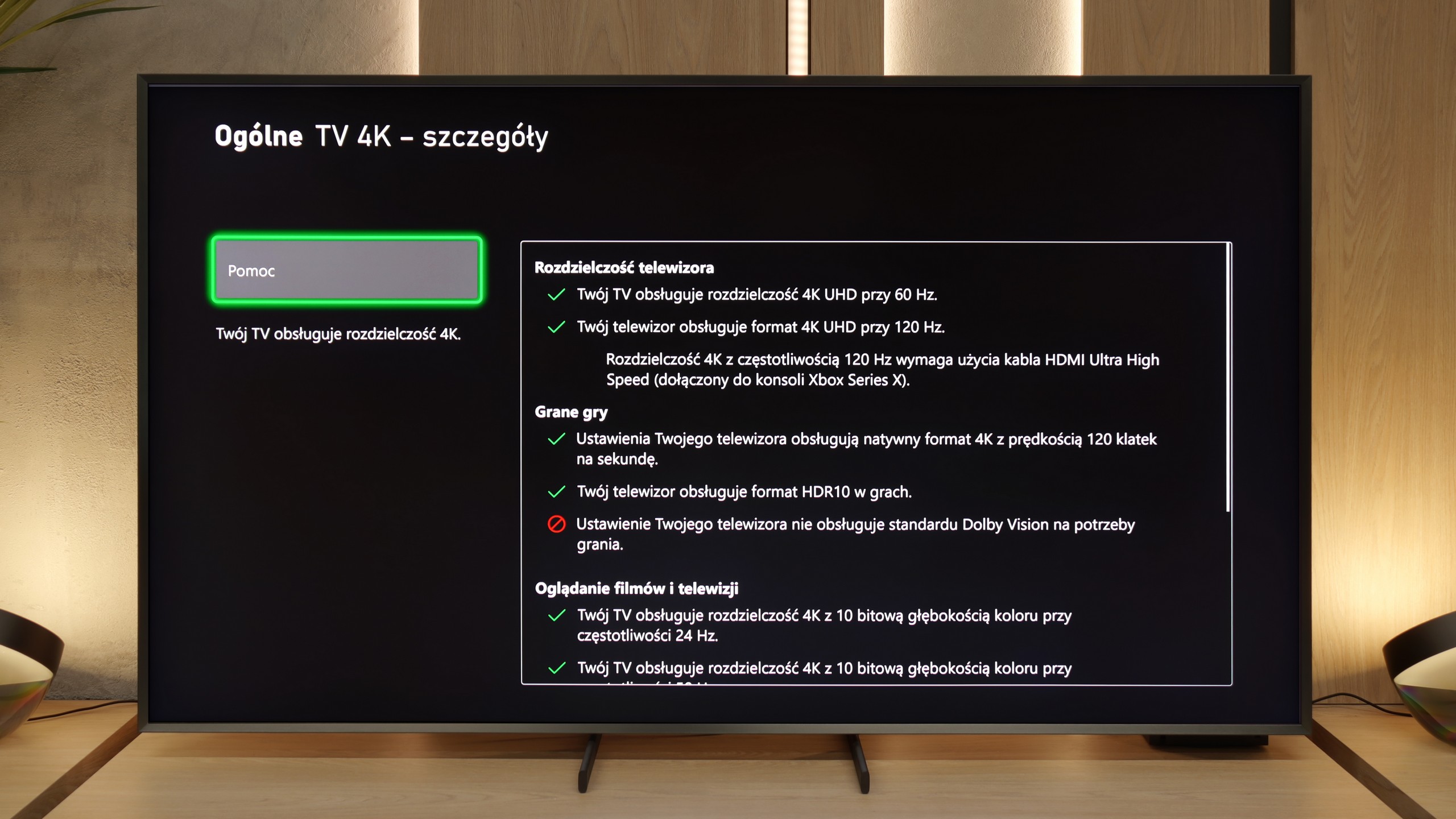

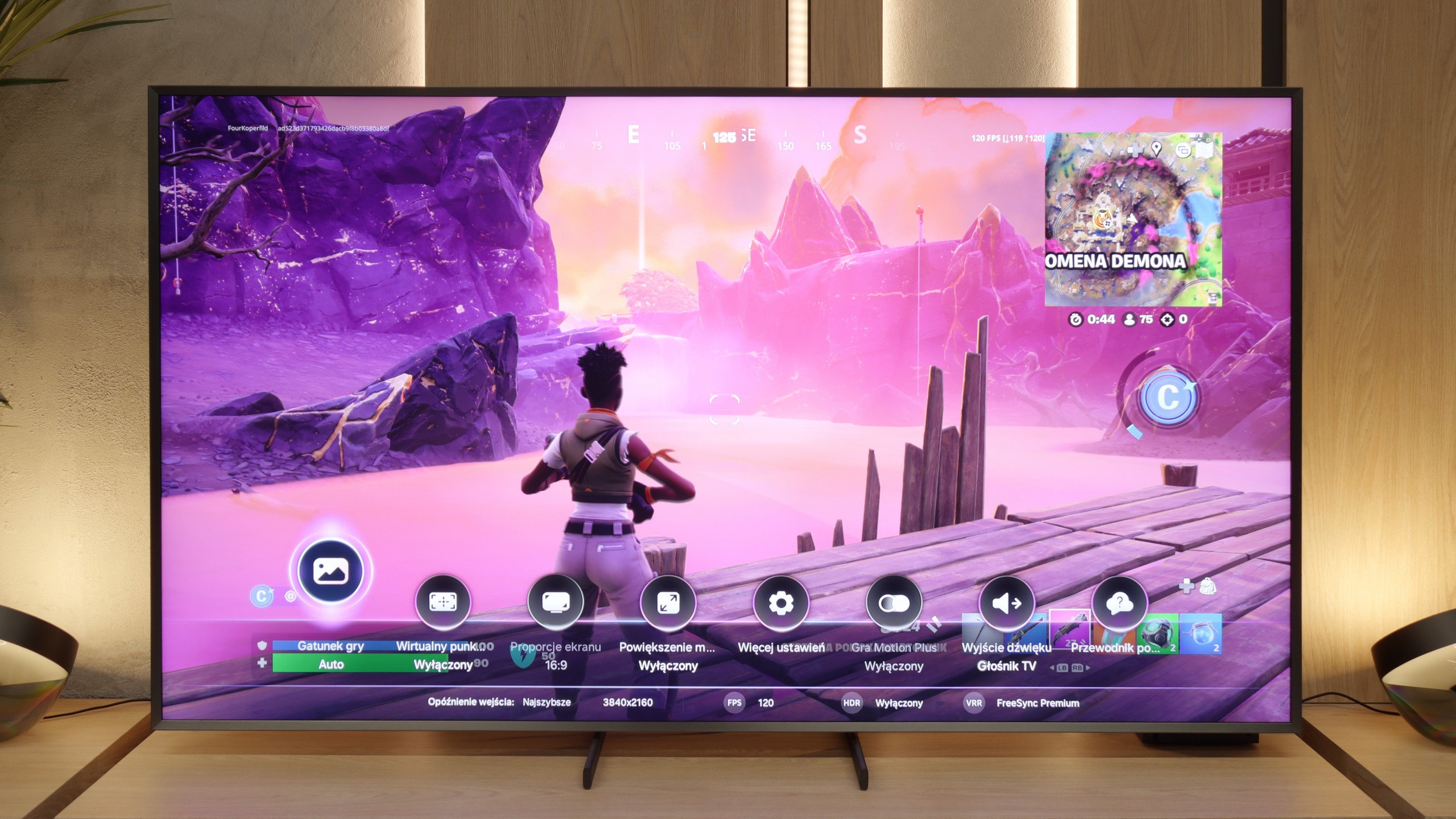

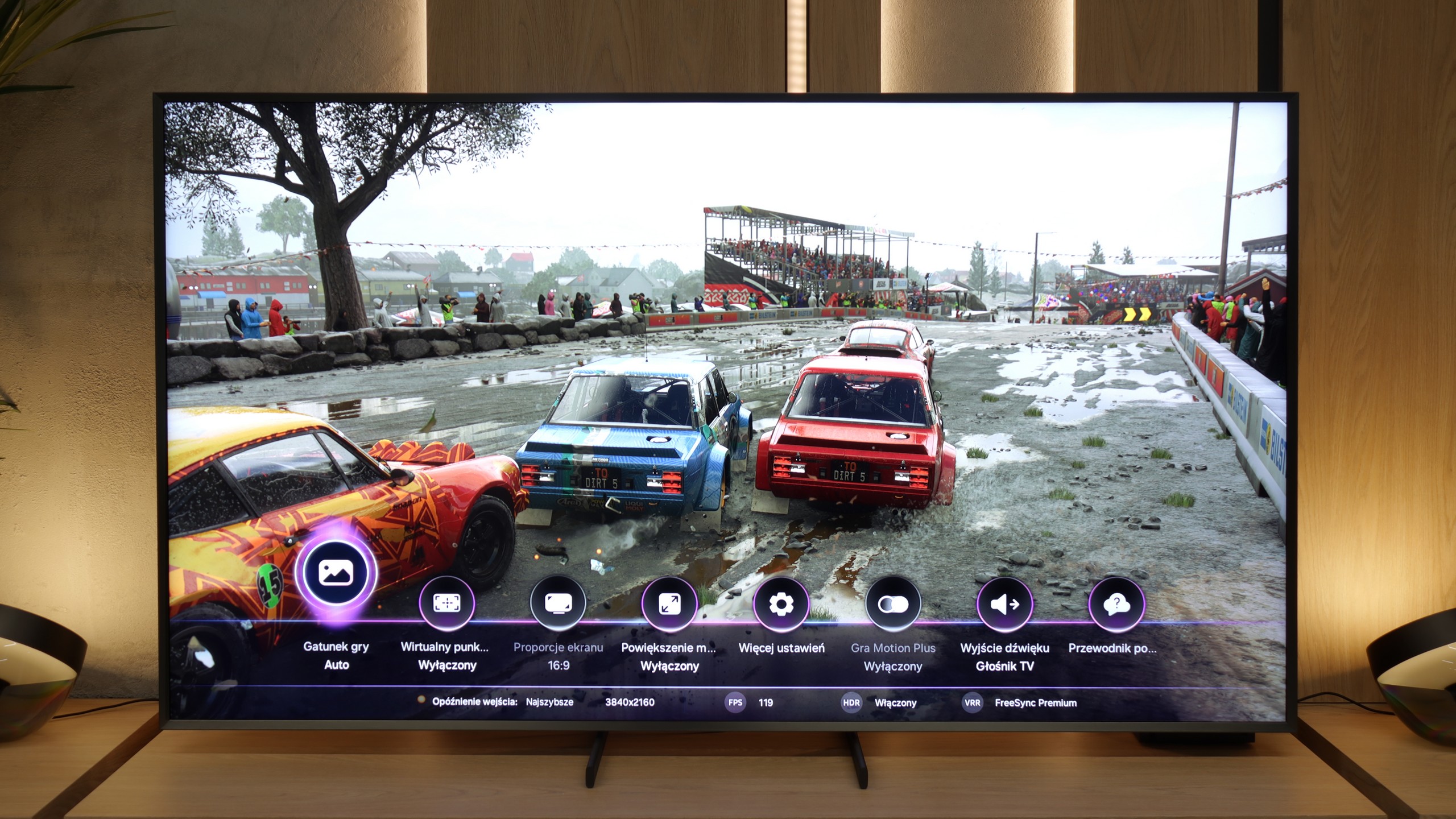
Panasonic Z95A this year shows that the manufacturer has made a huge leap forward in support for gamers. The television offers practically everything you can expect from a device in this range. Support for ALLM (Auto Low Latency Mode) and VRR (Variable Refresh Rate) ensures smoothness and no tearing in dynamic games. The 144 Hz panel allows for incredible fluidity, and the additional support for resolutions other than 4K provides greater flexibility, which is a big plus for gamers using various configurations.
Also noteworthy is the unique and rather specific "Game Bar." Its bubble interface stands out from the competition and allows quick adjustment of key settings such as VRR, brightness level, or picture mode, without the need to interrupt gameplay.
However, in this class of devices, there has been a slight disappointment – Panasonic Z95A only offers two HDMI 2.1 ports instead of four. This is definitely too few for a premium television, especially in times when many people have more than one device requiring full HDMI 2.1 support, such as a next-gen console or a high-end computer. In this category, it's hard to accept, especially given the high aspirations of this model. Despite this, the television is an excellent choice for gamers, offering versatility and functionality at the highest level.
It's really good here. The QN900F offers a full set of features that we would expect from a top-notch gaming TV – we have VRR, ALLM, Game Bar, as well as cloud gaming apps. However, the biggest standout is its proprietary motion smoother, which also works in games and – importantly – does not add noticeable input lag. This is something we won't find in other competitors.
Unfortunately, there is also something concerning. This year, Samsung has clearly messed up something with its TVs. During the testing of the QN900F before its update, it had the HGIG feature, which allowed for perfect adjustment of HDR settings for consoles. However, according to our procedures, we always update the hardware to the latest version – to give the manufacturer a chance to fix any issues. And here… it went the other way.
After the update, the HGIG feature disappeared from the menu, making proper configuration of the console for HDR practically impossible. It was supposed to be complete – 165Hz, four HDMI 2.1 ports, a full gaming package… but unfortunately, it turned out to be a little mishap. What a shame.
Input lag
10/10
9.8/10
SDR
HDR
Dolby Vision
Panasonic Z95A impresses with an outstanding level of input lag, making it one of the best choices for gamers in its class. Regardless of the mode, the television achieves results of around 13 ms at 60 Hz and just 5 ms at 120 Hz, ensuring an incredibly smooth and responsive gaming experience. Moreover, Panasonic allows gaming in Dolby Vision mode without significant delays. Well done!
In terms of input lag, the QN900F presents a class of its own. Regardless of the resolution or refresh rate set – the response time remains instantaneous. It's one of those TVs where it's really hard to feel any delay. Gamers can count on full responsiveness and certainty that every action from the controller will be instantly reflected on the screen. In this category – it's simply the top shelf.
Compatibility with PC
8.6/10
8.4/10


Panasonic Z95A works brilliantly with computers, offering full support for chroma 4:4:4, which translates to very good font readability. However, it’s important to keep in mind the characteristic display method of WOLED panels with a white subpixel, which can be noticeable during prolonged work with documents or while browsing websites. This is something to consider if the television is to be used as a monitor for work.
Additionally, the support for G-Sync technology is a great bonus for gamers using NVIDIA graphics cards. As a result, the Z95A provides smooth gameplay without tearing and delays, making it a versatile device for both work and play.
QN900F is an 8K television, so even in a larger size it can be considered a fully-fledged work monitor – of course, provided that someone can actually fit such a colossus on their desk. The device supports chroma 4:4:4, so overall font readability is good, although we noticed some issues with the thinnest lines. This may be due to the fact that at its native 8K resolution, some texts are simply so microscopic that the television isn't necessarily perfectly suited for it. It sounds a bit silly, but how else can you explain it? 😉
On the other hand, the QN900F can be a great choice for PC gamers. It supports G-Sync technology, and at 4K resolution, it offers a refresh rate of up to 165 Hz. So if you have a very powerful computer, the QN900F will allow it to spread its wings and showcase its gaming prowess in full glory.
Viewing angles
9.7/10
5/10
The viewing angles on the Panasonic Z95A are outstanding, thanks to the use of an OLED panel with MLA technology. This means the image remains sharp, full of detail, and free from visible colour shifts even at steep angles. In practice, this means that regardless of where we are watching the TV from, the picture quality stays at the highest level.
In this regard, the Z95A ranks among the very best, competing for the title of leader with TVs based on QD-OLED panels (Samsung and Sony). It's hard to find anything better on the market, making this model an ideal choice for larger rooms or movie nights with family and friends, where everyone can enjoy a perfect picture.
The viewing angles on the QN900F are pretty decent, but we feel that the "Ultra Viewing Angle" coating that Samsung heavily advertises underperforms compared to last year. Yes – the effect is still much better than most LCD TVs with VA panels, but it's still a fair way off from OLEDs or high-quality IPS panels. The image holds up reasonably well from the side, with colours not fading as quickly as with standard VAs; however, we expected more, especially since previous generations from Samsung have managed to perform better. Perhaps the addition of the matte coating that appeared in this year's 8K series is having an impact on this.
TV efficiency during daytime
6.2/10
7.1/10

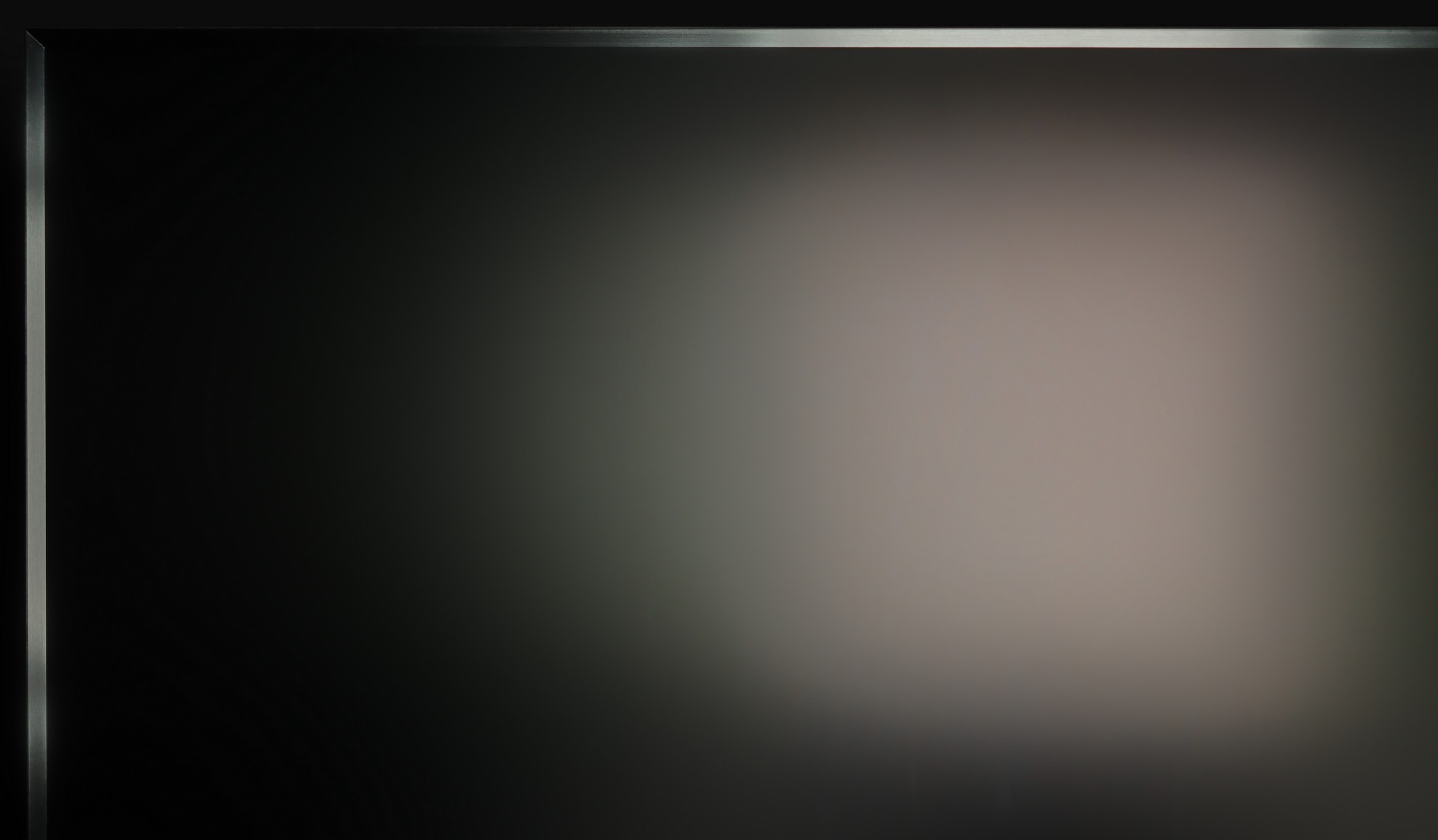


Matrix brightness
Average luminance SDR
Samsung QN900F: 723 cd/m2
Panasonic Z95A: 493 cd/m2
Panasonic Z95A is equipped with a glossy panel that does quite well at reducing reflections. However, due to the use of micro lens array (MLA) technology, black levels in bright environments can take on a slightly cherry hue, which is particularly noticeable in heavily lit rooms. In terms of brightness, the average SDR value is around 500 cd/m², which comfortably allows for enjoyable TV viewing in most living rooms. It should be noted, however, that in very sunlit conditions or under intense artificial lighting, this brightness may prove inadequate to completely eliminate reflections and maintain ideal contrast. Nevertheless, in typical home conditions, the Z95A performs very well.
One of the new features in 8K from Samsung is the matte display. The Koreans have been gradually "matting" their televisions this year, and it's fair to say that the QN900F is at the very top in this regard – reflections are suppressed better than in any other model on the market. Practically, this means that even in a brightly lit lounge, the image remains clear, and reflections virtually disappear from the screen. Of course, such a coating comes at a cost. Colours lose a bit of intensity, and black in bright light doesn't appear as deep as on glossy screens. But this is more of a detail than a real problem, because after all, the vibrancy of colours and depth of black matter most in the evening, with the lights off – and then this effect completely disappears.
Details about the matrix
Subpixel Structure:

Panel uniformity and thermal imaging:

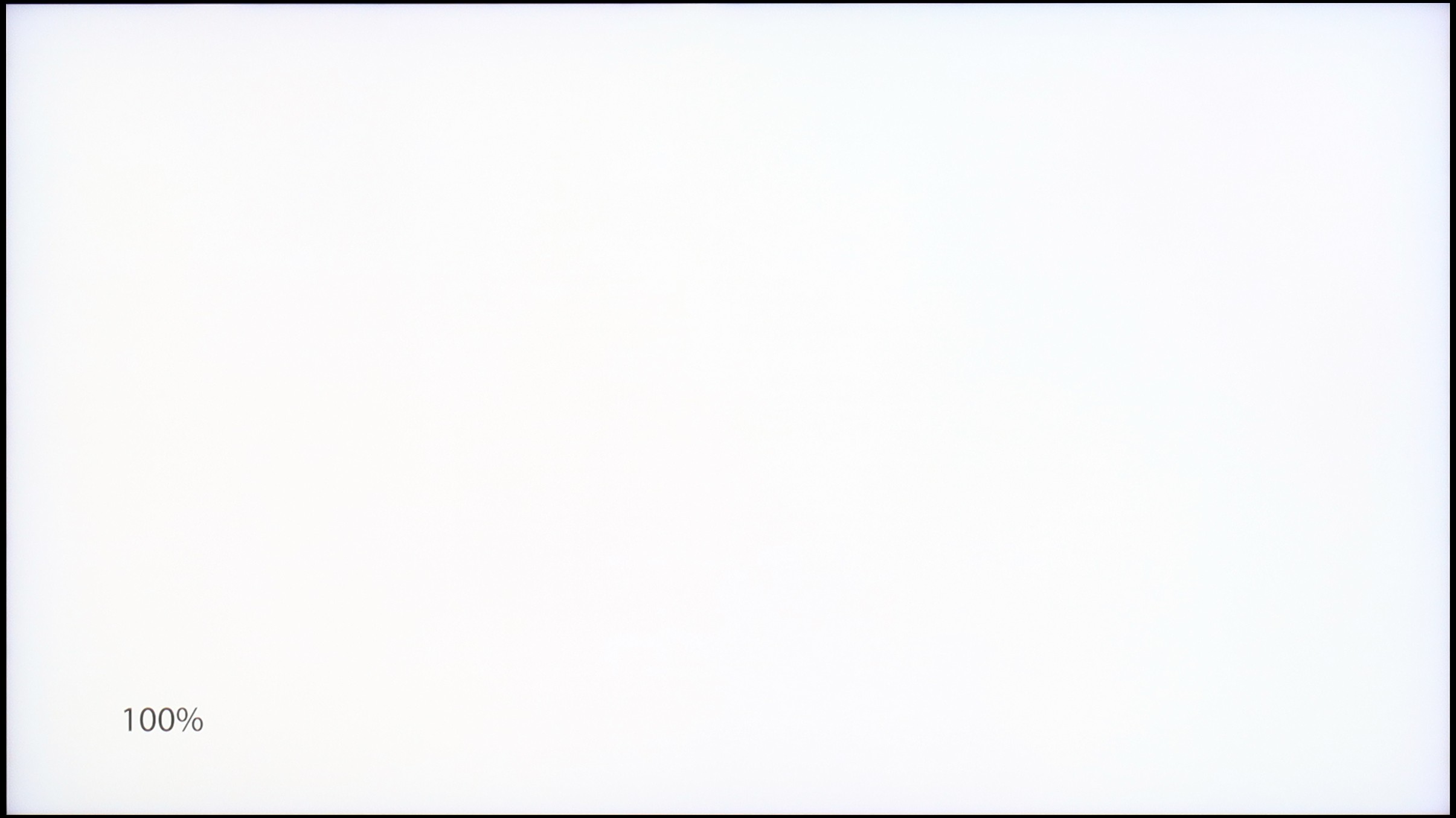
Panasonic Z95A
Samsung QN900F
TV features
7.4/10
7.2/10
- HDMI inputs2 x HDMI 2.0, 2 x HDMI 2.1 48Gbps0 x HDMI 2.0, 4 x HDMI 2.1 40Gbps
- Other inputsToslink (Optical audio), IR (remote)
- OutputsToslink (Optical audio), eARC (HDMI), ARC (HDMI)Toslink (Optical audio), eARC (HDMI), ARC (HDMI)
- Network InterfacesWi-Fi 2.4GHz, Wi-Fi 5GHz, Ethernet (LAN) 100MbpsWi-Fi 2.4GHz, Wi-Fi 5GHz, Ethernet (LAN) 100Mbps
- TV receptionDVB-T, DVB-T2, DVB-S, DVB-S2, DVB-CDVB-T, DVB-T2, DVB-S, DVB-S2, DVB-C
Classic features:
- Recording to USB (terrestrial TV)
- Recording programming
- Picture in Picture (PiP)
- RF remote control (no need to aim at the screen)
- Backlit remote control
- Teletext
- Audio only mode
- Possibility to connect Bluetooth headphones to the TV
- Possibility to simultaneously use Bluetooth headphones and the TV speaker
Smart features:
- AirPlay
- Screen mirroring (Windows Miracast)
- Wyszukiwanie głosowe
- Voice search in native language
- Ability to connect a keyboard and mouse


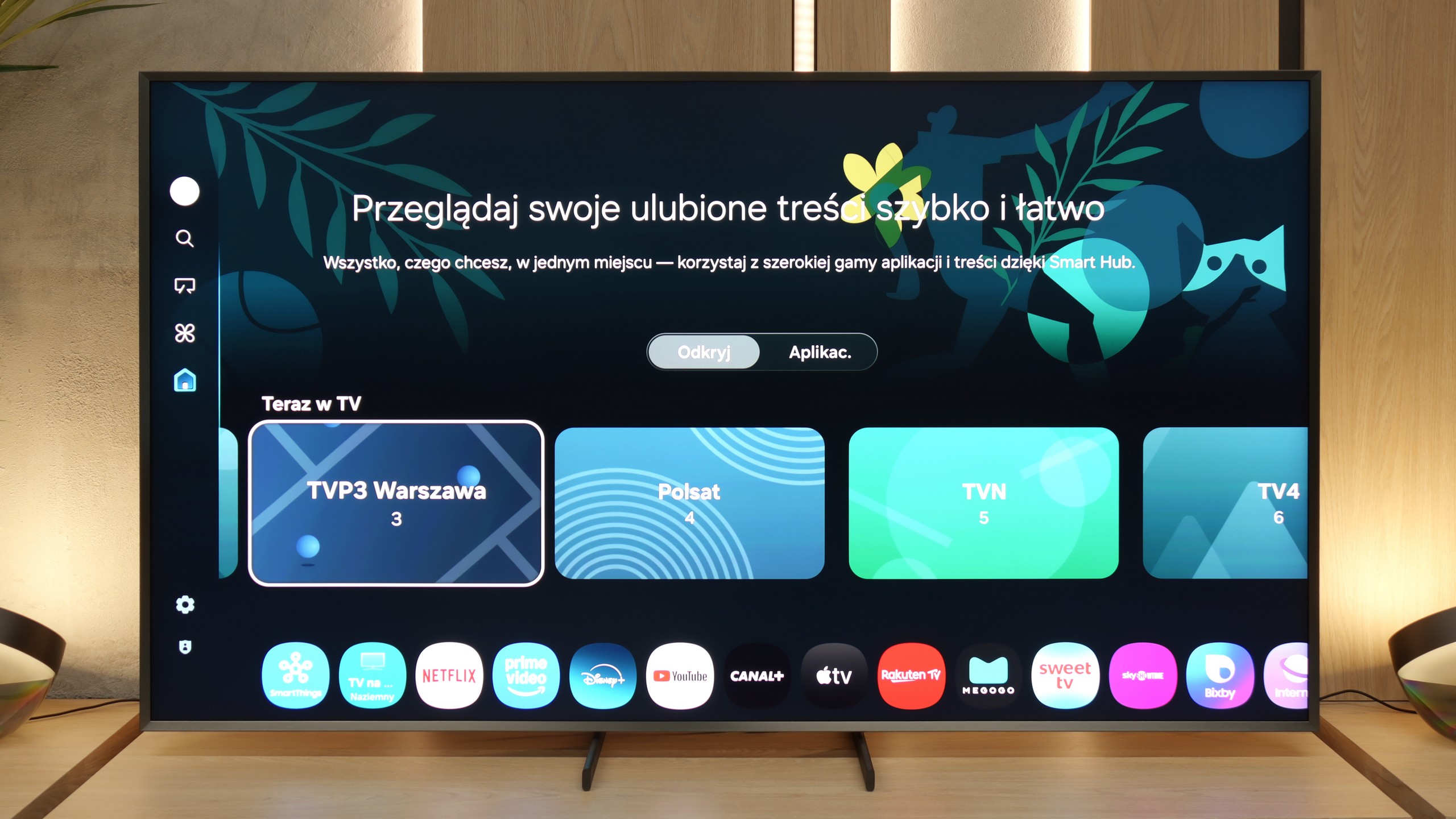
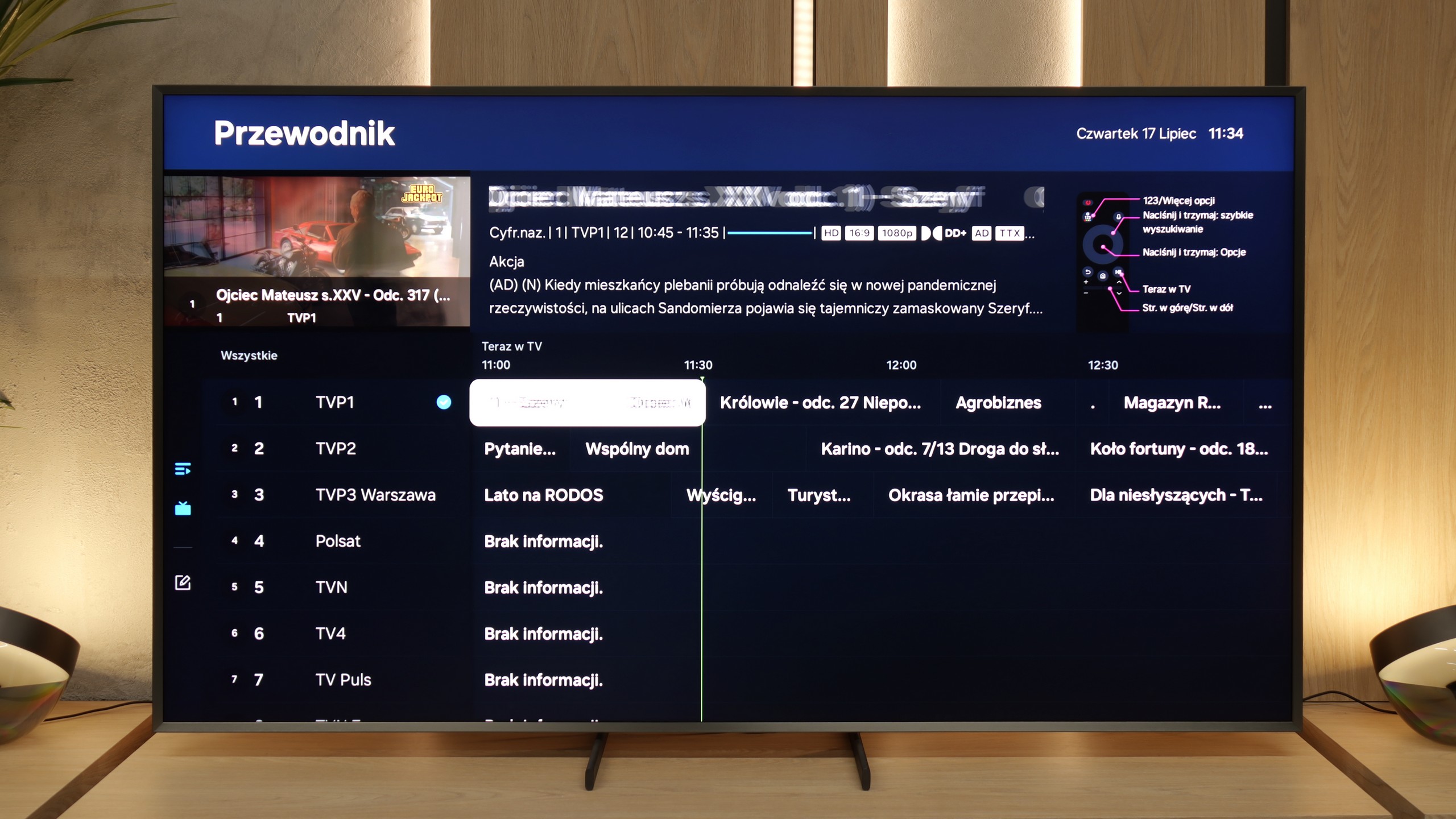
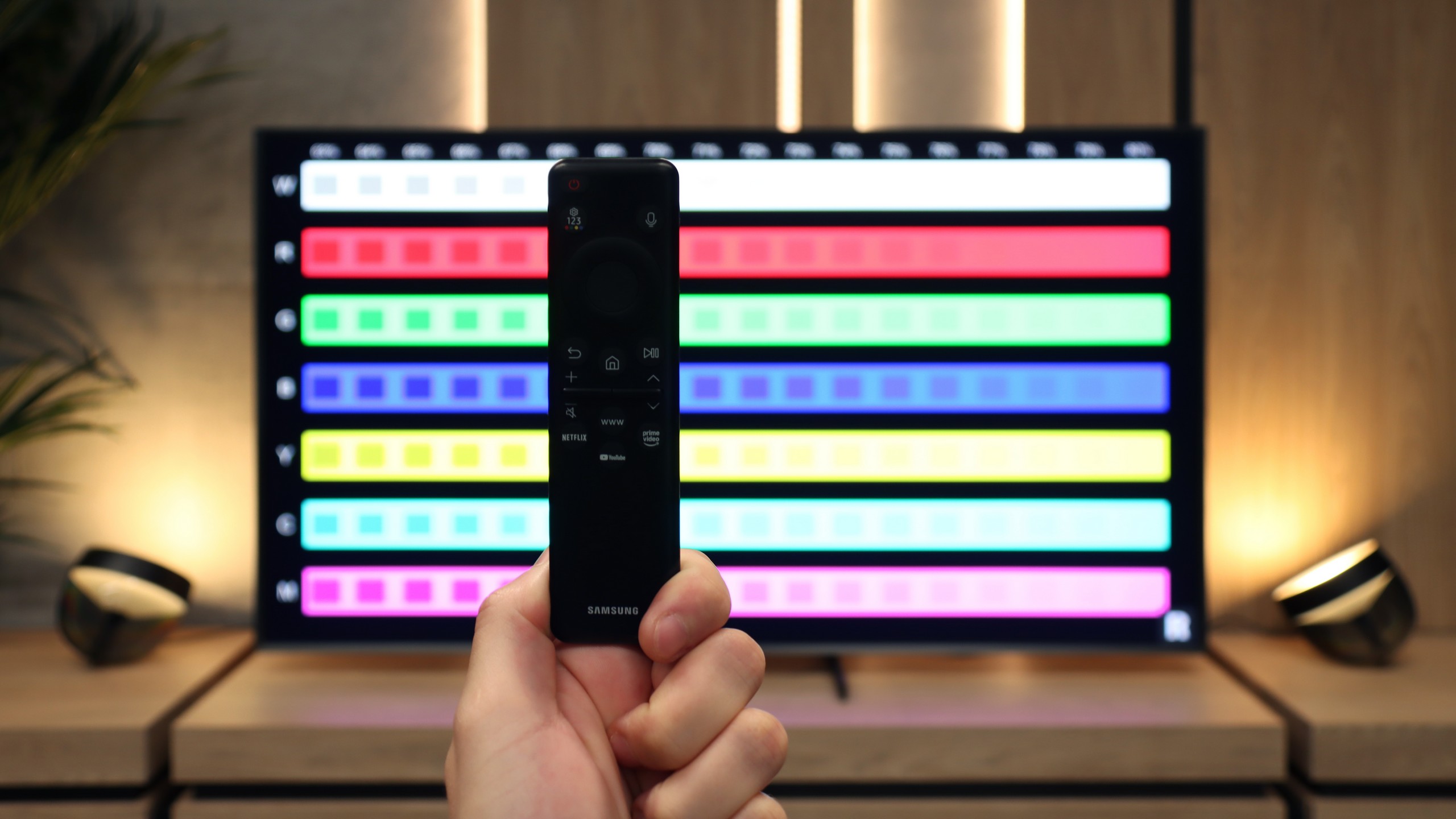
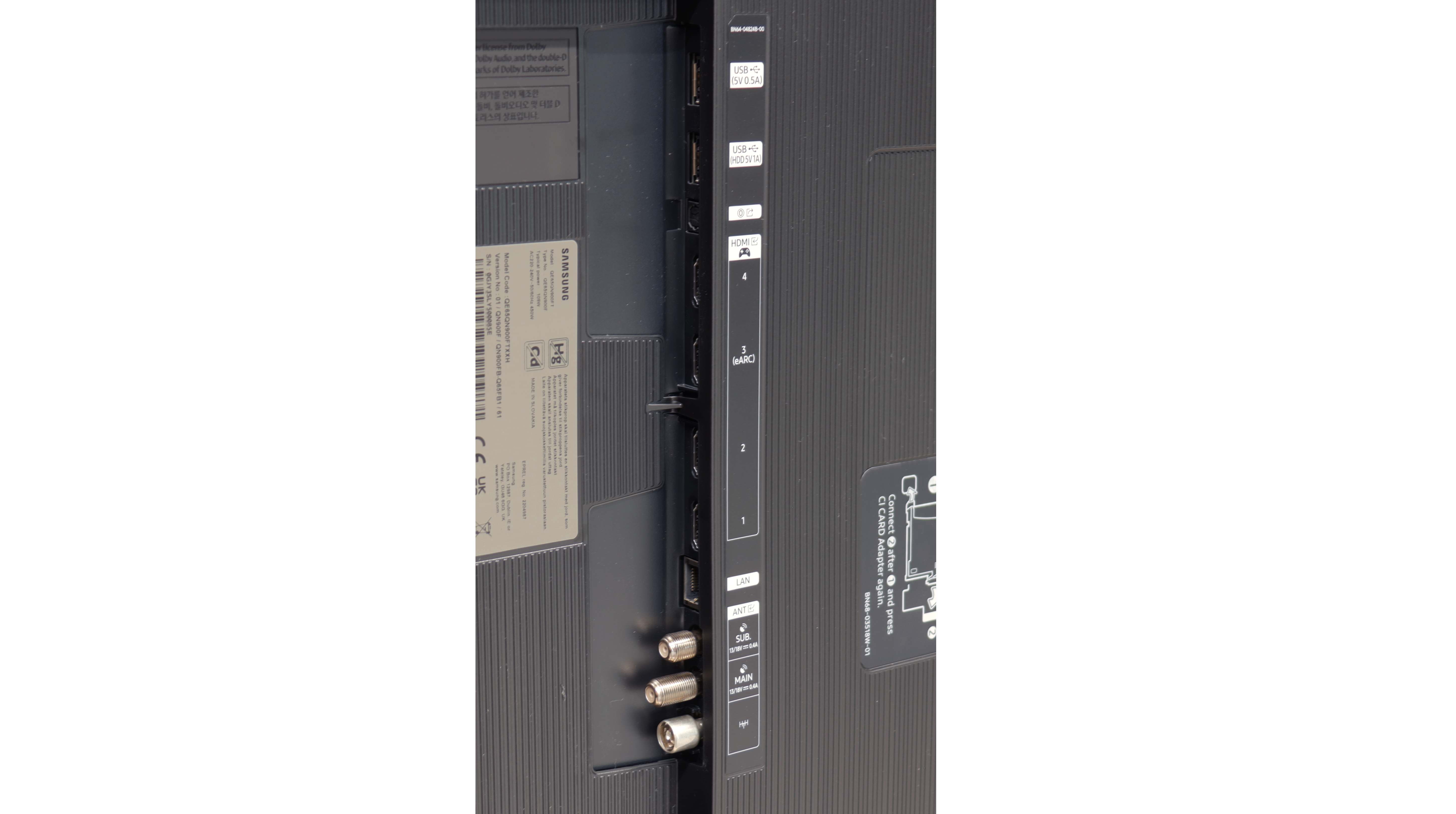
Panasonic Z95A introduces a new operating system, which we think is a very good move compared to last year's MZ2000 model. The system is called Fire TV and was created by Amazon. It is a novelty in the Australian market, standing out for its fluidity and responsiveness, providing comfortable navigation and quick performance in everyday use.
Despite numerous advantages, the system still has a few shortcomings. Some popular applications, such as SkyShowtime, as well as Australian streaming services like Player.pl or TVP VOD, are not available. Another drawback is the quality of the interface translation – many functions have been translated in a rather imprecise way, giving the impression that the translation was done "on the fly." Some names are unclear, especially for those who have not previously interacted with other televisions, which may hinder the use of the device.
In terms of user functionality, the Z95A performs very well. It includes options such as USB recording, support for PiP (picture in picture), AirPlay, and Miracast. Because of this, the television offers versatility and meets most demands of modern users, although the Fire TV system still requires refinement to fully compete with more established solutions on the market.
Television Features
QN900F has a lot to offer. In addition to standard connections and tuners, it also has many television-specific features. There’s teletext, a clear EPG, and even a PiP function, which is quite rare these days. The QN900F easily handles other devices using the included solar remote, which in a sense compensates for the lack of recording from the built-in antenna tuners.
Smart TV
When it comes to smart features, Samsung as usual provides plenty – there’s a large number of applications (though not all), and Tizen on the QN900F ran very smoothly. It’s also hard to find a better television for connecting external devices – AirPlay, Miracast, Chromecast – everything works flawlessly. An interesting feature is the Art Gallery mode, which – like in The Frame – allows you to display images on the screen when it’s off. With quite a thick, massive frame, the effect is really impressive – it looks like a digital painting on the wall and could leave a lasting impression. So, you could call the QN900F extravagantly The Frame Super Extra Pro 😉
Playing files from USB
3.1/10
9.1/10
Supported photo formats:
Maximum photo resolution:

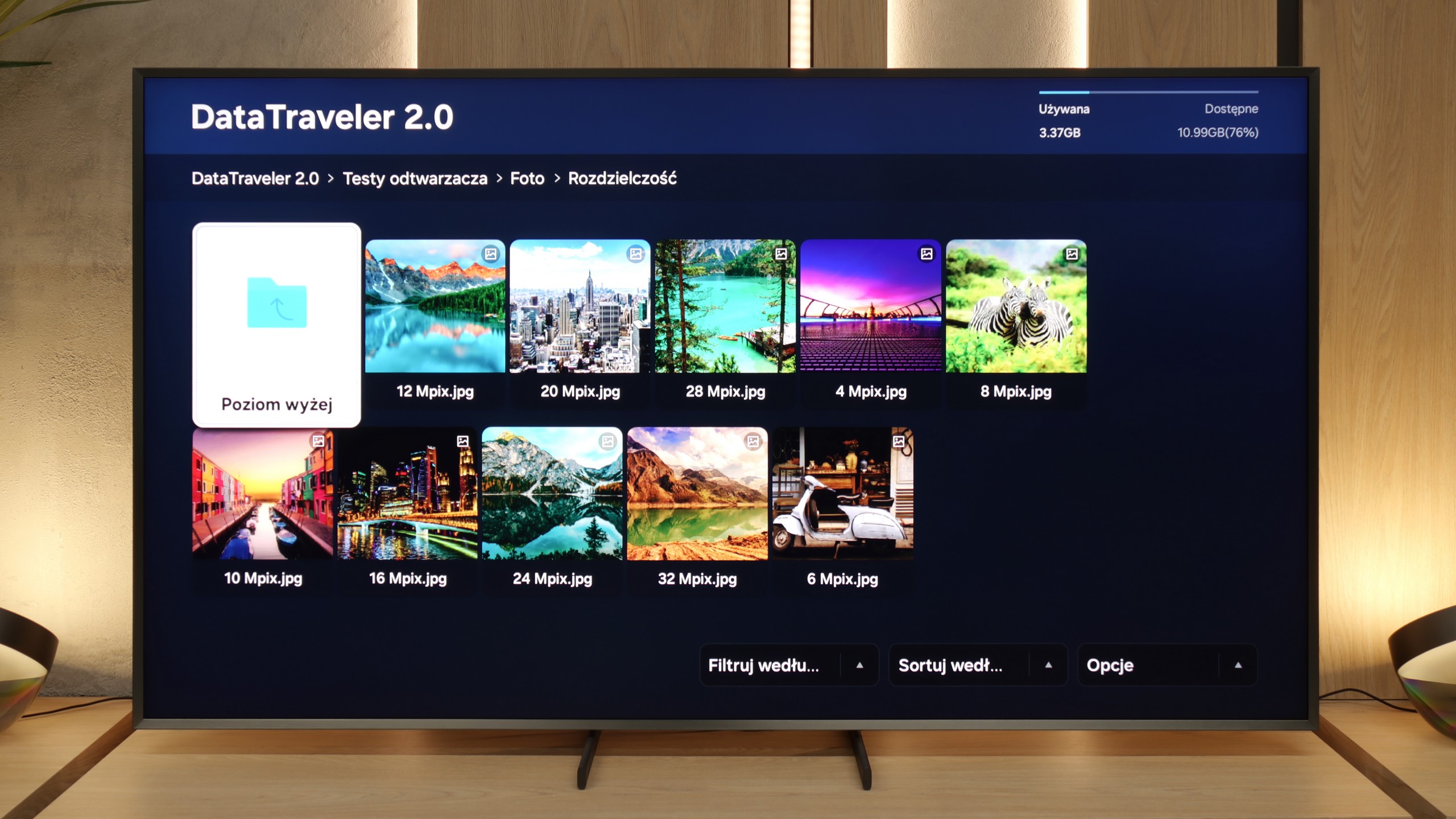
As we mentioned earlier, the Fire TV system in the Panasonic Z95A has some issues with supporting the Polish language, which unfortunately is also noticeable when playing files from a USB memory. The built-in media player does not allow for the correct display of Polish characters, such as "ź", "ć" or "ł", which can be burdensome for users relying on local subtitles for movies. If correct display of Polish characters is important to the user, it may be necessary to use an external application available in the Amazon store or to stream content through other devices.
The built-in media player in the QN900F works really well. During testing, we didn’t notice any major issues with handling various audio and video formats – and you can check this for yourself in our file list. The only puzzle that arose was with the subtitles – we could only get those saved in .txt format to work, even though according to Samsung's information, the TV should support many more extensions. What could be the reason for this? It's hard to say. It’s possible that it’s just a temporary bug that will be fixed in one of the upcoming updates.
Apps
6.1/10
8.7/10














































Sound
8.7/10
8.2/10
- Maximum volume--
- Dolby Digital Plus 7.1
- Dolby True HD 7.1
- Dolby Atmos in Dolby Digital Plus (JOC)
- Dolby Atmos in Dolby True HD
- DTS:X in DTS-HD MA
- DTS-HD Master Audio
The sound in Panasonic Z95A is one of its strong points, mainly due to the built-in soundbar that provides impressive audio experiences. Support for Dolby Atmos makes the sound spacious and full of depth, perfectly fitting into the cinematic experiences. Both dialogues and sound effects sound clear and dynamic, which will satisfy even the most demanding users. Unfortunately, there is a lack of support for the DTS format, which may be disappointing for those using movies or content that require it. Nevertheless, the overall sound quality in Z95A is at a very high level and successfully replaces external audio systems (at a reasonable price) in most home applications.
The QN900F performs really nicely – as you’d expect from a premium television. The bass is quite strong but slightly muted. We wouldn’t compare it to top-tier audio systems, but for built-in speakers, it does the job. The high tones also stand out – quite clear and distinct, which is particularly helpful when watching films with a lot of dialogue. Unfortunately, Samsung still doesn’t support the DTS:X format in its televisions. This means that if we want to hear sound recorded in that standard, we need to connect an external home theatre system via an amplifier – the television alone simply won’t play it.


